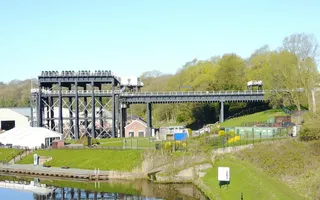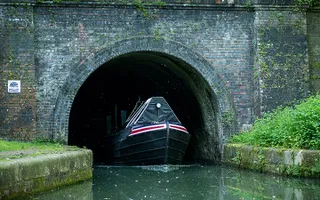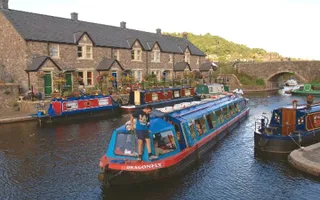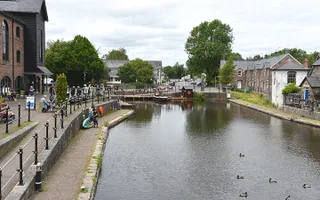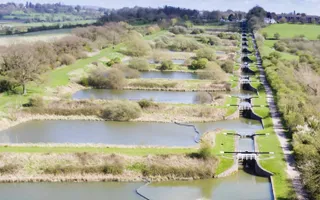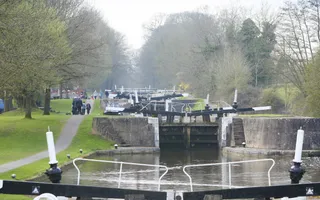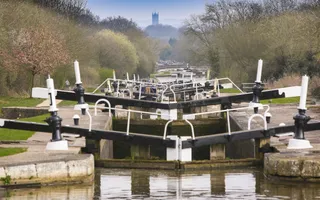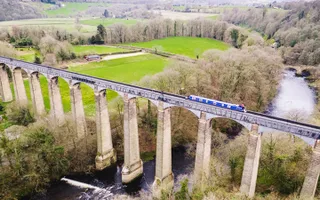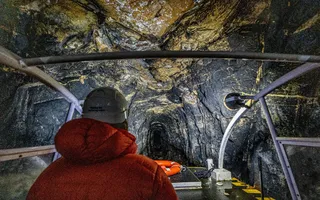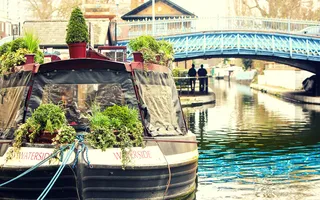Discover the top ten marvels of the modern waterways - as chosen by you.
A soaring aqueduct in North Wales, a three and a half-mile canal tunnel in Yorkshire and a ‘stairway to heaven’ flight of 21 locks in Warwickshire are among the ten new 'Marvels of the Modern Waterways' chosen by Britain’s boaters and canal supporters to celebrate the renaissance of the nation’s 200-year-old canal network and a decade of being looked after by the charitable sector.
Some of these engineering masterpieces have, for over 70 years, been recognised as spectacular examples of the nation's industrial heritage. These are joined by new additions, such as Little Venice in London and the longest staircase flight of locks in Britain at Foxton in Leicestershire, reflecting both the increasing importance of the waterways as vibrant green spaces in the nation's towns and cities and their longstanding value in providing popular, accessible beauty spots across the country.
The winners of the poll
We've been inviting Britain's canal-loving public to vote for the new list of Marvels of the Modern Waterways, and the winners are:
-
Anderton Boat Lift: the ‘Cathedral of the Canals' in Cheshire is a scheduled monument that lifts boats 50ft from the River Weaver to the Trent & Mersey Canal.
-
Bingley Five Rise Locks: the Grade I listed staircase locks on the Leeds & Liverpool Canal in Yorkshire are one of the steepest in the UK.
-
Blisworth Tunnel and Stoke Bruerne: at almost two miles long, Blisworth is the longest wide, freely navigable tunnel in Europe, and just a short walk from the Northamptonshire picture postcard village of Stoke Bruerne, steeped in canal history.
-
Brecon Basin: a great place to start your journey along the Monmouthshire & Brecon Canal, often regarded as Britain's prettiest.
-
Caen Hill Locks: the flight of 16 locks on the Kennet & Avon Canal in Wiltshire are a scheduled monument.
-
Foxton Locks: the Grade II* listed site on the Grand Union Canal Leicester Line is home to the longest, steepest staircase flight of locks in Britain.
-
Hatton Locks: famous ‘stairway to heaven' flight of 21 locks on the Grand Union Canal in Warwickshire.
-
Little Venice: an oasis of tranquillity where the Grand Union Canal meets the Regent's Canal in the heart of London.
-
Pontcysyllte Aqueduct: the Grade I listed structure and World Heritage Site taking the Llangollen Canal over the River Dee valley in Wales is 1,000 feet long and 125 feet high.
-
Standedge Tunnel: the longest, deepest, and highest canal tunnel in the country carries the Huddersfield Narrow Canal under the Pennines in Yorkshire.
View the gallery
Richard Parry, chief executive, said: “Having served as the arteries that fuelled the Industrial Revolution 200 years ago, today the canal network across England and Wales is busier than ever with boats navigating this unique living heritage. The list of must-see spots the public has chosen showcases the breadth of what the waterways have to offer, from stunning feats of engineering to the growing role canals have as beautiful places to spend time and reap the health and wellbeing benefits of being by the water. Locks feature highly in the list, and the simple pleasure of gongoozling – watching the boats go by – is an antidote to the hectic pace of modern life. And this barely scratches the surface: with waterways offering free, accessible blue and green space on the doorstep of millions, everyone can find their own special place.
"Everyone can find their own special place."
“The creation of the Canal & River Trust ten years ago has been a great achievement, putting the waterways in trust for the nation and continuing the renaissance of this wonderful living heritage that is the finest of its type in the world. The latest chapter in the story is only just underway and brings its own challenges, with the 250-year-old canals vulnerable to changing weather patterns. We are calling on the public and the government to continue to support the waterways so we can continue to protect and preserve this incredible network and avert the decline we saw last century.
“We hope that people will come out and see these magnificent sites and join us in celebrating hundreds of years of canals playing a vital role in British society and the ways they can continue to serve society in the future.”
Green corridors
Canals are an intrinsic part of the nation's landscape with the quintessentially British sight of a narrowboat, lock or a humpback bridge familiar to anyone in towns or countryside alike. Once the arteries of the Industrial Revolution, busy with boats carrying goods like coal, steel, porcelain and food, they now play an equally important role in society as green corridors that bring nature into cities, improving community wellbeing and tackling health inequalities, as well as supporting jobs and local economies.
Living history
Today, as well as being visited by around 10 million people every fortnight, the Trust's waterways are used by around 35,000 boats for pleasure, for work, and as homes, with boaters navigating the 250-year-old network in the same way as their predecessors. We are committed to preserving this living history and have been able to invest £1.5 billion in our core charitable activities to maintain the waterways in our care since the Trust was formed in 2012.
Generational change
The past decade since the Canal & River Trust's launch has seen a generational change in the number of people volunteering on the canals, donating money and giving their support, with over a million people supporting the charity's work. This summer, volunteers will donate their five millionth hour to the Trust.
Get your free guide to fun days out in your area



